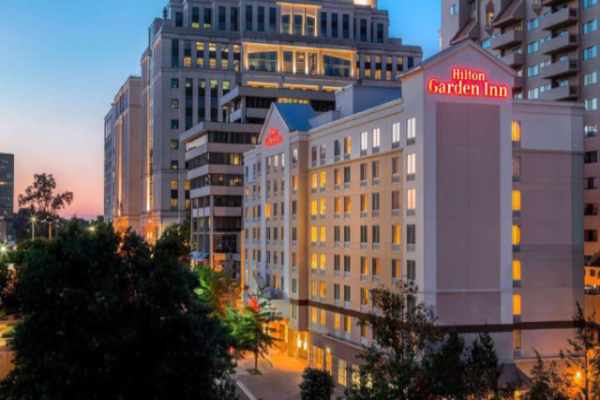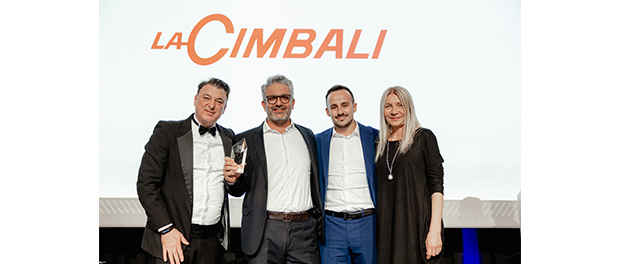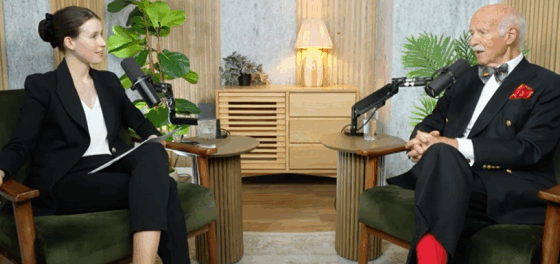
Global RevPAR at Hilton increased 1.4% in the third quarter compared to the same time a year ago, but there wasn’t a hint of worry from CEO Chris Nassetta during a call with analysts. In fact, a slowing environment might just be a catalyst for further Hilton growth.
Part of the optimism is based on current market dynamics that makes it increasingly challenging to build new hotels. In order to grow, hotel companies are turning to conversion opportunities to fuel net unit growth. “We’re taking a very disproportionate share of conversion opportunities around the world,” Nassetta said. In the third quarter, conversions accounted for 60% of Hilton openings, driven, Nassetta said, by the addition of SLH properties and “continued momentum” from Spark, Hilton’s premium economy conversion brand, which accounted for 20 openings in the quarter, with open hotels in both the U.S., the U.K. and Canada, and plans to open hotels in Germany and Austria before the end of the year. “The brand’s pipeline is three times larger than its existing supply, and we expect continued launches in international markets to further boost Spark’s trajectory positioning,” Nassetta said.
Expectations for the rest of the year and into 2025 are for hotel transactions to pick up after several sluggish quarters. Part of the surge, said Kevin Jacobs, Hilton’s CFO and president of global development, is a narrowing of bid/ask spreads, meaning sellers and buyers are closer on an agreed sale price. Conversions depend on a healthy transactions market. “There’s a lot more conversations around changes of ownership, which supports conversions,” Jacobs said. “You’ve had pretty wide spreads between bid and ask on transactions and transactions drive a lot of conversions. We are seeing a little bit of a thawing in bid/ ask spreads, which has led to more applications in the last 30 days or so on change of ownership. We’re starting to see a lot of more activity there.”

To be sure, convincing an owner or a new owner of an asset on a certain brand takes not only persuasion but numbers to back it up. Two of Hilton’s biggest traits, Nassetta said, are its scrappiness and drive to win deals. “I don’t know what everybody else is doing, but we’re hustling,” he said. “We have really solid relationships where we’ve done a really good job, which leads to what is really driving it, which is performance. These people are investing billions of dollars and they want to know they’re going to make money.”
Especially in a torpid RevPAR environment, where there is a flight to brands considered to deliver the highest amount of return on investment. “There are benefits of the environment we’re in,” Nassetta said. “In more difficult environments, environments where financing is less available, we end up disproportionately getting more conversions and more of what is available for new construction, because our brands are just more financeable. This environment has not been terrible for us.”
Stiff competition for conversions sometimes even means having to show owners the money—up front. Key money, or a payment made by a hotel operator or franchisor to a hotel owner to secure a management or franchise agreement, is a way to induce an owner to select a certain brand. Jacobs said that Hilton uses key money on less than 10% of its deals. “We use it when we have to; when it gets competitive,” he said.
Growth and Beyond
Hilton said it added a record 36,600 rooms to its system in the third quarter, contributing to record net unit growth of 7.8% from September 30, 2023. Construction starts were up 21%, excluding acquisitions and partnerships, with approximately half of Hilton’s pipeline under construction. “We continue to have more rooms under construction than any other hotel company, accounting for more than 20% of industry share and nearly four times our existing share of supply,” Nassetta said.
During Hilton’s Investor Day in March, Nassetta set out an EBITDA guidance of $3.69 billion in 2025 against a RevPAR environment growing at a clip of around 1% to 2%. Do the two square up? Nassetta thinks so.
“How do we feel broadly about 2025? We feel pretty good about it,” he said, pointing to a stronger macro consensus based on an economy that he referred to as “resilient,” though acknowledging a slowing growth rate do to tightening Federal Reserve measures that will keep rates higher and for longer. “Next year is going to look a lot like this year from a same-store growth point of view,” Nassetta said, adding the rather weak China performance will pick up. He noted that booking windows are extending because there’s not enough supply relative to the demand in the group segment.
Group business was a standout for Hilton in the quarter. Group RevPAR rose more than 5% year over year, led by strong demand for both corporate and social meetings and events. For the full year, Hilton group position is up 10% with group position in 2025 and 2026 up low double digits to mid teens. Nassetta commented that on the group side Hilton is seeing a pick up in city-wide events, which have are longer in gestation because they are booked multiple years in advance. “They spent millions of dollars planning these events, and they went for two or three years unwilling and or unable to do that,” he said.
There is “terrific demand” for corporate meetings, he said, “even though the workplace is sort of normalizing, it is not going back to what it was. A lot of people have needs and are making up for a time when they were more remote and they need to do meetings for innovation and culture building and the like.”
On the international side, Hilton said that around 55% of its pipeline of projects lie outside the U.S. Despite China’s fuzzy economic picture, and recent reporting that some Chinese residents are moving billions of dollars out of the country over worries of a cratering property market and economic doldrums, Nassetta was rosy over the country’s prospects. “I think the China business is doing great,” he said. “We think we’ll be up in China this year.”
On those real estate concerns, Nassetta said China is trying to find different uses for some buildings, which can be a boon for Hilton’s conversion business, particularly in the limited-service segment, “both in our master limited partnerships and in our Hilton Garden Inn business,” Nassetta noted, where it can employ adaptive reuse.






